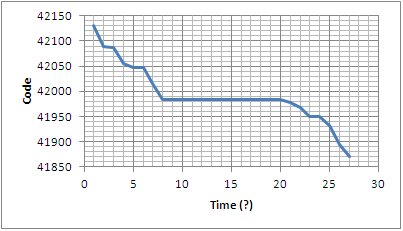Hello -
We are using an ADS8319 and I am seeing a kind of "plateau" effect in the digital values read from the device.
For example, for a slowly declining input voltage signal, the digital values will also slowly decrease until they reach a value where the lower byte is equal to 0xFF; at this point the value gets stuck for between say 2 and 7 subsequent samples. After being stuck for this brief period, the digital values will return to a normal, expectedl slow decay, matching the input voltage.
Here is an example of a contiguous set of A/D digital values to illustrate the problem:
| A493 |
| A469 |
| A468 |
| A448 |
| A43F |
| A43F |
| A41F |
| A3FF |
| A3FF |
| A3FF |
| A3FF |
| A3FF |
| A3FF |
| A3FF |
| A3FF |
| A3FF |
| A3FF |
| A3FF |
| A3FF |
| A3FF |
| A3FA |
| A3F0 |
| A3DE |
| A3DE |
| A3CD |
| A3A7 |
| A38F |
The repeated value is always 0xFF in the low byte; the high byte varies, so there are several places where the digital numbers form the plateau.
The number of times that the value repeats varies from 0 to 7 depending on the slope of the input voltage..
I suspected a SPI bus reading problem of some kind, but a scope actually shows the FF values being emitted from the A/D's SPI during readout.
I am using a 4.096V reference, which looks clean on the scope.
Any idea what might be happening? Thank you for any thoughts about this.

